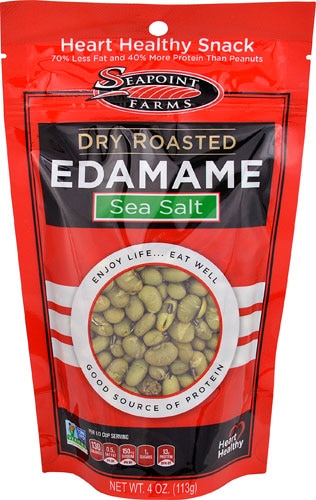You strive to eat a healthy and balanced diet, yet you could be missing an important mineral that your body needs. Did you know that magnesium is a vital component of the workings of more than 300 enzymes in the human body? Magnesium is involved in enzymes that regulate muscle and nerve function, energy production, blood sugar balance and much more. Yet, many Americans are falling short of obtaining adequate intakes of this key mineral in their daily nutrition, resulting in low magnesium levels.†
In fact, according to the National Institutes of Health (NIH), “Dietary surveys of people in the United States consistently show that intakes of magnesium are lower than recommended amounts.” Considering that magnesium is needed for optimal cardiovascular health, strong bones and nervous system function, here are some important ways to ensure you’re not missing out.
1. Get nutty
Fortunately, magnesium is found in a variety of foods, and, with a little effort, you can start getting more magnesium in your diet. Top of the list is almonds. Almonds lead the pack, with just 2 ounces containing 180 mg of magnesium. Next time you’re searching for a healthy snack, consider not just almonds, but cashews and peanuts, which are also respectable food sources of magnesium. Don’t like the sound of eating nuts? No problem. Try almond butter or peanut butter instead.
2. Rediscover beans
In addition to having protein and fiber, beans can give your diet a magnesium boost. A half cup of black beans and a half cup of edamame contain 60 mg and 50 mg of magnesium respectively. Kidney beans have a bit less magnesium, but are still considered a decent food source of this mighty mineral.
3. Take a bath
A small amount of magnesium can be absorbed transdermally, and many athletes, as well as weekend warriors, know there’s not much that can beat soaking in a warm Epsom salt (magnesium sulfate) bath when muscles are sore and tight.
4. Supplement to fill dietary gaps
No matter how well we try to eat, many of us still fall short of meeting our daily magnesium requirements. Think about how often you consistently eat the food sources above, and you might see why this could be true for you. Taking a supplement can be the ideal way to consistently get your magnesium intake to the recommended daily levels when your diet alone isn’t doing the job.†
If you tend to have a sensitive digestive system, you may want to avoid magnesium oxide, which can cause stomach upset in certain individuals. When choosing a magnesium supplement, look for a blend that includes forms more easily absorbed and gentler on the stomach, such as magnesium glycinate and magnesium malate.* Today, many people are also searching for alternative delivery methods for nutrients and magnesium powders have become quite popular.
With the combination of the right foods and the right supplements, low magnesium can become a thing of the past.
†These statements have not been approved by the Food and Drug Administration. These products are not intended to diagnose, treat, cure or prevent disease.
 Article contributed by Erin Stokes, N.D., Medical Director at INNATE Response. Dr. Stokes received her naturopathic doctor degree from Bastyr University in 2001. Shortly afterwards she began to pursue her passion for educating others by teaching Western Pathology and Psychology of Healing at Southwest Acupuncture College in Boulder, Colo. She combines her experience as a naturopathic doctor with an extensive background in the natural retail industry, most recently providing naturopathic consultations at an integrative pharmacy for over six years. Her personal mission is to empower people with the inspiration and tools to change their lives, and she is a frequent radio show and podcast guest. Dr. Stokes is a registered Naturopathic Doctor in Colorado, and lives with her family in Boulder, Colo.
Article contributed by Erin Stokes, N.D., Medical Director at INNATE Response. Dr. Stokes received her naturopathic doctor degree from Bastyr University in 2001. Shortly afterwards she began to pursue her passion for educating others by teaching Western Pathology and Psychology of Healing at Southwest Acupuncture College in Boulder, Colo. She combines her experience as a naturopathic doctor with an extensive background in the natural retail industry, most recently providing naturopathic consultations at an integrative pharmacy for over six years. Her personal mission is to empower people with the inspiration and tools to change their lives, and she is a frequent radio show and podcast guest. Dr. Stokes is a registered Naturopathic Doctor in Colorado, and lives with her family in Boulder, Colo.





